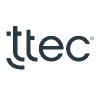The translation industry has become essential in the global market and economy as the demand for multilingual solutions has increased. Because of this, translators play critical roles in ensuring that international users can communicate effectively with each other.
And so, increasing productivity and efficiency have been crucial in maintaining a streamless, multilingual communication network.
Productivity software and machine translation tools that will boost the output of translation while still maintaining accuracy.
Today, we will examine these productivity tools and machine translation technology on how you can implement them into your day-to-day activities as a language professional.
Now, let's get started!
![]()
Time Tracking Can Build a Translator's Credibility and Here's How
In the translation industry, if you want a stable career as a translator, you must demonstrate professionalism and commitment by generating consistent, high-quality translations.
In researching this topic, we interviewed tech and language experts. One of them isJames Prior, the Founder and CEO of DoTEFL, an online TEFL company, that works with aspiring translators worldwide. He stated that although they try to avoid using translation tools when they’re teaching, he understands how translation technology can assist them in teaching their students to understand better the differences and similarities between two or more languages.
“Time tracking tools are useful when working with freelancers on our site, as it allows us to gauge how long it takes them to complete certain tasks. This is important when building the initial trust that's needed for a successful working relationship,” Prior explained.
But what is a time tracking tool? Time-tracking software is one tool that can help you to develop your discipline, boost productivity, and keep your time management in check. This productivity tool can assist in increasing your efficiency and identifying areas where you can improve. You can create a system using productivity tools effectively and establish an organized routine to keep you on track with your goals and objectives.

Good Bye, Pen and Paper. Hello, Machine Translation.
Machine translation software is a technology that has significantly revolutionized the translation industry. It automates the translation process, enabling translators to work faster and more accurately. Many machine translation software uses artificial intelligence (AI) and machine learning algorithms to analyze and translate text, improving the speed and accuracy of the translation process.
One of the primary benefits of machine translation software is its ability to save time and reduce costs. Machine translation software can translate large volumes of text quickly and accurately, enabling translators to focus on editing and refining the translations instead of spending hours translating each word manually. It makes translation services more affordable for clients and broadens the service to more people.
Another benefit of machine translation software is its ability to improve translation quality and accuracy. AI and machine learning algorithms can analyze vast amounts of data and learn from it, making the software more accurate and effective over time. We unwittingly use AI-powered machine translation tools in our day-to-day activities, like Google Translate, DeepL, Amazon Translate, and ChatGPT.
Even though you are using a machine translation engine, it is practical to follow best practices to improve your output by implementing it alongside other technologies you use, such as a time-tracking app and productivity tool.
For Lieu Dang, the Marketing Manager of Ling App, a gamified language-learning app, because they use various translation tools, her advice is that it is essential to set up translation memories and termbases properly.
“When transforming content to another language, challenges include ensuring accuracy in meaning and cultural context, maintaining the original tone and style, and adapting to differences in grammar and syntax. But if you go deeper into the context, you can do well,” Dang explained.
It just goes to show that despite what many think, human translators’ expertise, skill, and creativity are still greatly needed, especially in specialized fields like law and medicine. So incorporating the mentioned translation technology into your workflow can boost your speed and accuracy.

10 Productivity Tools That Will Make Your Translation Business More Efficient
So if you are looking to build a translation startup, set out a new career, or want to have a side hustle that will give you a bit of extra cash, you will need to invest in productivity software, translation technology, and a time-tracking app that will streamline your workflow and produce high-quality translations more quickly. Here are ten essential tools that you should look into, as follows:
-
CAT tools: Many translators use Computer-assisted translation (CAT) tools as their features, such as translation memory, terminology management, and machine translation integration, can assist your work by making it quicker to produce consistent translations.
-
Project management tools: This tool will be useful when you're handling several projects simultaneously and handling a team. It's a great way to keep track of your projects, clients can see the progress of the project and can help you identify which areas in your workflow that needs improvement. Most project management tools offer a range of features, including resource management, reporting, and task tracking, making your work more efficient.
-
Machine Translation Engine: As previously mentioned, machine translation engines can make your translation process more efficient as it can transform content from one language to another through AI technology. You will still need to post-edit the translated content, making your translation process much faster than manually translating content.
-
Localization/Translation Management Software: Unlike project management tools, localization or translation management software was created specifically for the translation industry. This software contains translation memory management, glossary, file format, content management, workflow automation, and vendor management.
-
Time Tracking Tools: It can help you monitor the progress of your project if you are taking too long on your task. You can assist in improving your workflow by identifying what tasks are taking up more of your time and finding ways to make your job more efficient.
-
Multilingual Dictionaries: As a translator, you will need to quickly find the meaning of words and phrases and the alternative words in another language. So instead of carrying a physical dictionary and searching the terms individually, you can now search for them on software, saving you a lot of time.
-
Automatic File Formatting Tools: You will be handling several file formats, such as .pdf, .docx, RTF, etc. This tool will help you find matching source files, transform them from one file format to another, and reduce formatting errors.
-
Writing Tools: An example of these tools is Microsoft Word and Google Docs. With these tools, you can better identify errors, check for spelling and grammar, and identify the number of words in your translated document.
9. Spell-Check Tools: English isn't the only language that has spell-check tools. There has been a rise in spell-check tools across different languages, which can help you catch any spelling errors and make your translated content appear more natural.
-
Grammar Checking Tools: Different languages have their own set of grammar rules, so it's not surprising that grammar-checking tools are now available in the market. This tool can greatly improve the overall quality of your translations as you can better catch minor errors that will refine your content.

Best Practices for Increasing Productivity and Generate More Quality Translations
As we researched this topic, we came across a couple of best practices you need to know when creating dynamic content for a multilingual market and staying ahead of your career in the translation industry. It is not enough just to have productivity tools and time-tracking apps to streamline your workflow and boost your output more efficiently. Below are some things you should consider when creating a system that suits your needs.
-
Selecting the Right Tools: Many translation tools are readily available, and selecting the ones that align with your specific needs is essential. Research the tools with the features and capabilities compatible with your workflow. Don’t waste money on software and tools that will not help you achieve your objectives.
-
Set Up Your Workspace: Create a workspace that allows you to work efficiently and without distractions. You can do this by ensuring that your environment is comfortable and that it won’t affect the setup of your computer and internet connection. Your environment can affect your productivity, but it is a place where you will be staying for hours, so it has to make you want to stay.
-
Manage Your Projects: There is a lot of project management software out there, and by having one, you can better keep track of deadlines, organize workflow, and collaborate more efficiently with clients.
-
Automate Your Day-to-Day Tasks: Automate whatever task is repetitive and tedious. As mentioned, machine translation software has made generating and transforming content from one language to another easier. Use tools that will make work simpler to do, such as translation memory software, terminology management, quality assurance, file extraction and conversion, etc. It will free up your time to focus on the more challenging aspects of translation work.
-
Maintain Quality and Consistency By Reviewing Your Translations: Even though machine translation tools have become more accurate, it isn’t 100% perfect, which is why human translators are still needed. As previously stated, rushing to finish things can lead to errors and inaccuracies. That is why it is crucial that you carefully examine your translation and check for any inconsistencies and errors. Reviewing your work will ensure that your clients get quality work and give you confidence in your craft.
-
Keep Learning and Stay Up-to-Date With Trends: In our globally competitive market, staying safe with your current position isn’t enough. You must continuously improve your translation skills by learning about new tools and techniques, attending webinars, reading industry publications, and networking with other translators. By staying up-to-date, you can offer the best possible service to your clients.
As the founder of a language service provider, Will Ward has first-hand experience with Arabic language services due to working with top law firms, think tanks, book publishers, and other international organizations. He gave us some good advice when creating a strong translation workflow.
“The first pillar of a strong translation workflow is, as mentioned above, timing. The second pillar is a strong internal review and editing process. This ensures you’re sending out a polished product with zero mistakes. The third pillar is organization; achieve this by building a coherent and well-maintained file management system. It should be easy to navigate and reference and will save you hours of necessary file hunting. If you have a regular client, it would also be useful to link a part of this file system so a client can regularly access their files,” Ward explained.
Conclusion
Time tracking and machine translation tools are essential for increasing productivity and efficiency in the translation industry. Regardless of what others say, machine translation won't be taking human translator jobs any time soon. However, if you want to be competitive in your career as a language professional, you will need to be proficient in using the mentioned tools above. Hopefully, the different tips and tricks on how you can effectively use them will come in handy once you get started in your career.
Feeling inspired? Visit our blog for more career advice! How can you be sure the information we provide is top-notch? We are a group of professionals working with recruiters, career coaches, and HR specialists from all over the world!
Trust our experience and let us help you find a new job in Europe!




















موسى صالح 10mo ago
can you please givee the name of publisher, because I wanna put him at my research please
can you please givee the name of publisher, because I wanna put him at my research please